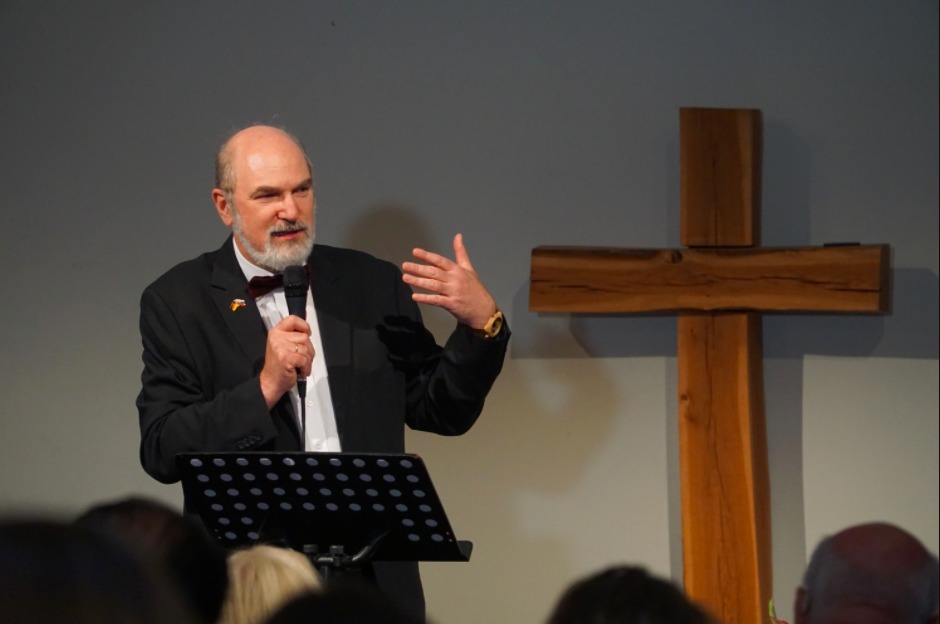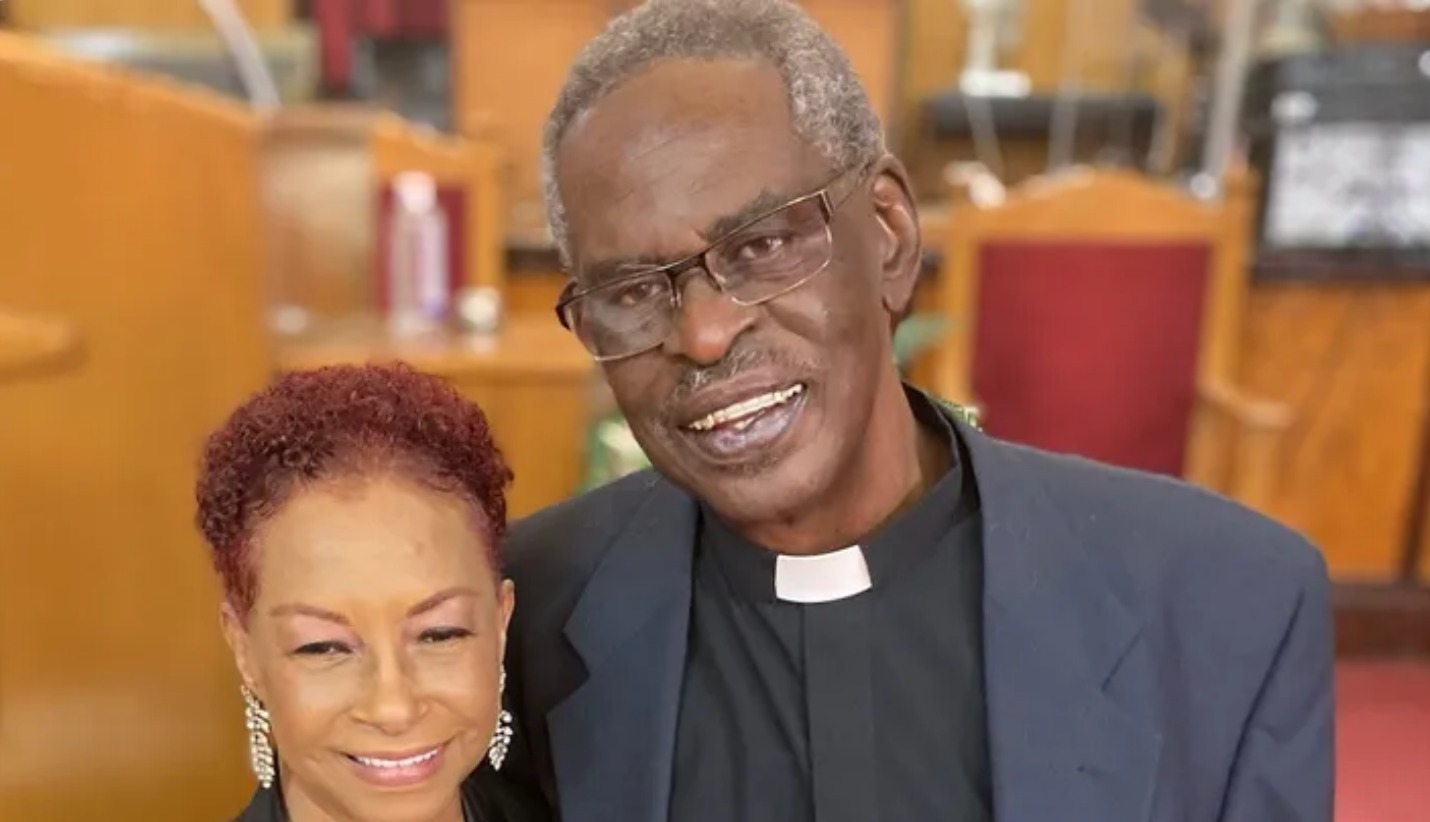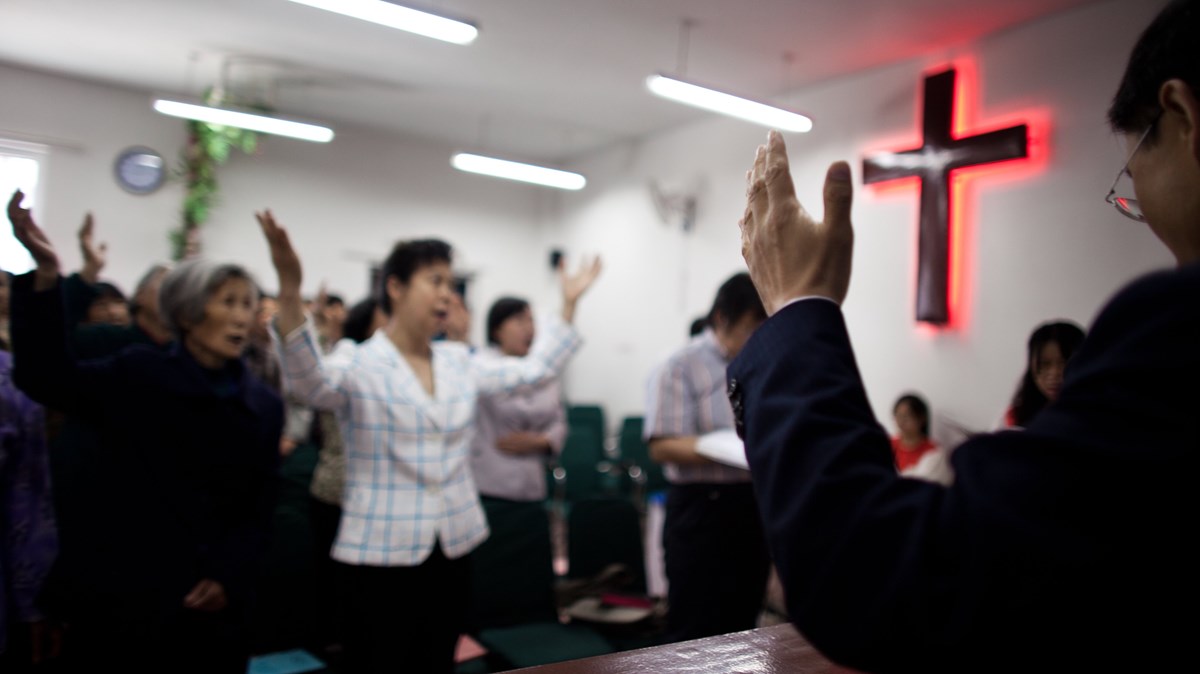Christianity’s growth in China has stalled since 2010.
That’s according to a new Pew Research Center report measuring religion in China published today. In 2010, approximately 23.2 million adults in China self-identified as Christian. In 2018, 19.9 million adults did so, which Pew researchers say is not a “statistically significant gap.”
Among Chinese Christians, the percentages of zongjiao (Mandarin for “organized religion”) activity have also stagnated. Nearly 40 percent (38%) of Christians said they engaged in such activities once a week in 2010, but that figure dipped slightly to 35 percent in 2018.
“Some scholars have relied on a mix of fieldwork studies, claims by religious organizations, journalists’ observations and government statistics to suggest that China is experiencing a surge of religion and is perhaps even on a path to having a Christian majority by 2050,” the Pew report stated.
But more than a decade’s worth of data from surveys conducted in China provide “no clear confirmation of rising levels of religious identity in China, at least not as embodied by formal zongjiao (宗教) affiliation and worship attendance.”
Pew published its previous report on religion in China in May 2008 ahead of the Beijing Olympics. While that study did not touch on the rate of growth of the Christian faith in the country, it acknowledged the presence of “indirect survey evidence” that suggested a “potentially large number of unaffiliated, independent Christians.”
Its latest report highlighted statistics from the Chinese government that appeared promising at first glance as the number of Protestants in the country jumped from 700,000 to 38 million between 1949 and 2018. However, the two sets of data cannot be directly compared to one another as they utilized different sourcing and methodology and did not mention whether children were included in the count, Pew said.
Between 2016 and 2018, the number of Protestants increased by 10 million (from 28 to 38 million). However, the origins of this rise are uncertain, Pew said: It may be due to an influx of new converts or when Christians who previously worshiped in unregistered churches became recategorized and gained legal status.
“While many Chinese people convert to Christianity, some Chinese Christians apparently also leave the faith,” Pew researchers added.
One-third of the adults who identified as Christian in a 2016 survey by the China Family Panel Studies (CFPS) did not do so in the 2012 analysis. This meant that the number of Christian Chinese adults grew by 1 percent during this period.
In the same surveys, one quarter of the adults who said they were Christian in 2012 no longer identified as such in 2016. One in 5 of them also said they did not believe in Jesus Christ or Tianzhu (the Mandarin words for “God” in Catholicism) in 2018.
The Pew report highlighted the difficulty in representing Christianity in China accurately due to factors like the lack of available data, Mandarin-to-English translation gaps, and how culture and politics have impacted religious activity in the country.
As Pew was not permitted to conduct surveys within China, researchers analyzed surveys conducted by academic groups based in the country: the CFPS, Chinese General Social Survey (CGSS), the China Labor-force Dynamics Survey (CLDS), and the World Values Survey (WVS). It also examined data from the Chinese government and state-run religious associations like the China Christian Council and the Three-Self Patriotic Movement (TPSM).
There are also subtle differences in the Chinese words used to connote English terms like “religion” and “belief.” Zongjiao (宗教) refers to organized religion and encapsulates five officially recognized faiths in the country: Buddhism, Catholicism, Islam, Protestantism, and Taoism. Xinyang (信仰), which means “believe,” generally implies a formal commitment or serious conviction, while xiangxin (相信), which denotes “belief in,” does not always carry religious connotations.
Christian demographics and composition
An adult in China who says that Christianity is their zongjiao xinyang–a formal commitment to an organized religion or belief system–is likely to be a woman (72%), more advanced in age, who possesses a lower educational attainment than the average Chinese adult according to the 2018 CGSS.
There is a range of estimates for the number of Christians in China because of differences in sources and methods used, and also because some analyses have made adjustments to the limitations imposed by survey and government data, noted the Pew report.
For instance, the extent of geographical sampling coverage may affect the accuracy of Christian estimates. “Surveys may yield a slightly lower Protestant estimate if Wenzhou – said to be the most Christian city in China – is excluded from the sample,” Pew stated.
The government’s “heightened scrutiny” of Christian activities is another contributing factor that may add to the perception that Christianity is not growing in China, although this is a hypothetical notion as there is no available data to reflect it, said Pew. Nonetheless, researchers recognized that there are existing constraints in data collection, like how many Christians worship in underground churches (dixia jiaohui 地下教会) or house churches (jiating jiaohui 家庭教会) and will likely refrain from revealing their religious associations. Christians in the Chinese Communist Party (CCP), which prohibits members from holding any religion, may also withhold this information in a survey, said Pew.
Just two percent of Chinese adults, or 20 million people, picked “Christianity” as their religious belief according to the 2018 CGSS. Protestants make up close to 90 percent (18 million) of this figure and the remainder are mostly Catholics.
Other surveys reflect similar findings: two percent of Chinese adults said they “believe in” (xinyang) Christianity in the 2018 WVS, while three percent said they “belong to” (shuyu 属于) Christianity in a 2016 CFPS survey.
About 1 percent of respondents identified with Christianity in the 2021 CGSS, although Pew noted that the survey had a smaller respondent pool of 19 provinces, municipalities and autonomous regions, compared to 28 in the earlier 2018 survey.
Adults who formally identified Christianity as their religion (zongjiao) are more likely to say that religion is very important in their lives, compared to those who believe in Jesus Christ and/or Tianzhu but do not necessarily identify as Christian (61% vs. 29%). The former are also more likely to say they attend worship services once a week or more (55% vs. 21%).
In its broadest measures of Christian affinity, close to eight percent of Chinese adults have connections to Christianity as they identify as a believer, believe in the Christian God, or participate in a type of worship attendance common to Christians, Pew said.
The more beliefs, the merrier
What may also affect estimates of Christianity’s growth in China is that many Chinese adults hold multiple (albeit contradictory) religious beliefs and engage in various religious practices, even if only 1 in 10 formally identify with a particular religion like Christianity or Islam.
In East Asia, “people may practice elements of multiple traditions without knowing or caring about the boundaries between those traditions, and often without considering themselves to have any formal religion,” wrote Purdue University’s sociology professor Fenggang Yang.
About 40 percent of adults in China believe in at least one of the following: Jesus Christ, Tianzhu, Buddha and/or a bodhisattva, Taoist deities, Allah, or ghosts. One in five (20 percent) believe in more than one of these religious concepts and figures.
Less than 10 percent (7%) say they believe in Jesus or Tianzhu and only two percent say they hold this belief while rejecting all other gods and supernatural elements.
Cultural practices that have spiritual undertones, like visiting the gravesites of family members, choosing an auspicious day for special events, and belief in feng shui, are commonplace. For example, 75 percent of adults in China say they go to a family member’s gravesite at least once a year, especially during Qingming Festival (Tomb Sweeping Day), to pay their respects by engaging in religious rituals like burning incense and joss paper money as a form of ancestor veneration.
Chinese Christians may do likewise as a means of honoring their loved ones, but will often refrain from engaging in ancestor worship.
Church landscape
Protestant churches in China are also not proliferating.
The number of registered Protestant venues, which includes churches (jiaotang 教堂) and meeting points (juhuidian 聚会点) like apartments or office spaces, increased substantially between 1997 and 2008. But they have now “roughly leveled off” according to the Pew study.
There were approximately 60,000 “legal Protestant venues” in 2018, a slight increase from 58,000 venues in 2009, according to data from China’s State Council Information Office.
These numbers do not capture Protestant house churches or unofficial meeting points, Pew acknowledged. Some scholars, Pew added, also believe that underreporting occurs frequently to “appear compliant with the state’s goal to contain religion.” In the Fengxian district of Shanghai, local officials referred to 24 registered Christian worship sites in 2019 even though they reported having accepted 73 (out of 86) unauthorized Christian sites into the official system in 2018.
Familial ties
A majority of Christians in China did not grow up with Christian parents. About one third (31%) of Christians had a Christian mother, while one fifth (21%) had a Christian father.
Christians are also the least likely religious group (38%) to marry or cohabitate with someone who shares a similar faith according to the 2018 CGSS. By comparison, Buddhists (45%), adults who identify with folk religion (78%), and Hui Muslims (96%) are more likely to do so.
Religious ‘nones’?
A majority of Chinese adults (90%) say they hold no religious beliefs (zongjiao xinyang) in the 2018 CGSS. Another study by the WVS shows that 9 in 10 adults do not have any religious beliefs as well. But only one-third of Chinese adults identify as atheist (wu shen lun zhe 无神论者) according to the 2018 WVS.
The disparity in recorded figures may arise because zongjiao typically refers to belonging to a religious organization or belief system. Survey results may not accurately reflect Chinese adults’ understanding of the term “religion” as they may still continue to hold to certain spiritual beliefs. For example, some may not consider their beliefs in Buddha a religion, Pew observed.
Consequently, the proportion of adults who say they are irreligious is “far larger” than the proportion of adults who “reject any belief in gods or who never engage in spiritual activities.” What this distinction looks like numerically: only 61 percent of Chinese adults say they do not believe in (xiangxin) any gods or deities in the 2018 CFPS survey. But when belief in supernatural forces or participation in Chinese customs is included, “the rate of non-religion” drops further, although Pew did not reveal what this figure was.




























![[Video] More – Aghogho » GospelHotspot](https://gospelhotspot.net/wp-content/uploads/2024/04/More-Aghogho.jpeg)
















